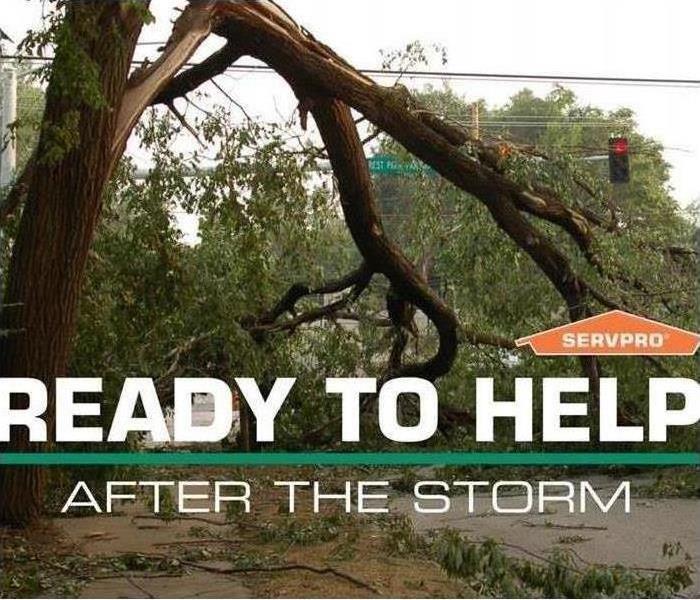How to Prepare for Hurricane Season
5/12/2021 (Permalink)
Officially, the hurricane season starts on June 1 and ends on November 30. However, in the Eastern Caribbean and along the US East Coast, the peak season runs mainly from mid-August through mid-September. Hurricanes are powerful and unpredictable storms that can cause immense damages in their path. For you to stay safe and protect your property during a hurricane, preparedness is critical. Check out how to prepare for hurricanes and what to do during and after one.
Hurricane Preparedness Tips
Before the Hurricane
- Create an emergency kit. FEMA recommends packing the following items in your emergency kit:
- Water for drinking and sanitation to last at least three days;
- Non-perishable food for at least three days;
- Hand crank or battery-powered radio (tuned in to NOAA Weather Radio), as well as spare batteries;
- Flashlight with extra batteries;
- First aid kit;
- Whistle to call for help;
- Dust mask, plastic sheeting, and duct-tape for shelter making;
- Moist towelettes and garbage bags for sanitation;
- Pliers or wrench to turn off utilities;
- Can opener;
- Local maps;
- Cell phone with an extra charger.
- Learn your area’s flooding risk and community hurricane evacuation routes. Know the geographical location you live in.
- Create a family evacuation plan. Determine a meeting place for your family and routes to get there. Plan how to get in touch with your family if separated. Plan where you’ll go if you must evacuate, such as a shelter.
- If you don’t have flood insurance, get one now. Regular homeowners insurance policies don’t cover flood damage.
- Find out whether your property is flood-prone due to its elevation level.
- Store copies of important documents, such as proof of ownership of any property in your emergency kit.
- Back up the data on your electronic devices to ensure it’s secure if your computer or other devices are damaged during the hurricane.
Secure Your Property:
- Secure your roof. Make your roofing and frames stronger by installing reinforcements, such as straps or clips. Also, secure loose shingles with heavy-duty adhesive and seal around your home’s chimney or vent pipes to keep water out.
- Maintain gutters and downspouts. Clean your gutters and downspouts regularly to prevent clogs. These could cause water damage to your home when the rain starts to pour. Also, ensure your gutters are firm and not sagging.
- Secure your windows. Strong winds can shatter your windows, leaving your home vulnerable. The best way to secure your windows is to install permanent storm shutters made of steel, aluminum, and other materials. Installing plywood is also a good defense for your windows. However, avoid taping as it doesn’t prevent the glass from breaking.
- Caulk your home. Caulking is a fast way to waterproof your house and reinforce vulnerable areas. Caulk around your windows and doors, the edges of your house, and around chimneys and other roof penetrations.
- Insulate the outside first floor walls with rigid foam or install plastic sheeting. It won’t stop all the water from getting in, but the insulation will keep out most of the silt.
- Reinforce your garage. To make it withstand powerful winds, secure your garage door with a brace kit rated for storm and hurricane winds. Other ways to strengthen your garage door are installing a metal post system or covering the door with metal panels, fabric screen, or 5/8-inch plywood.
- Trim trees and shrubs. Loose branches in your yard (and neighborhood) could be struck by powerful winds during a storm, damaging your house. So cut those dead or loose branches to safeguard your property.
- Secure loose objects. Your yard may also host things that could become projectiles in high winds. Tie-down and secure anything that could be swept up by winds, such as potted plants, lawn furniture, and dog houses. When a storm is imminent, bring light objects inside.
- Protect appliances from power outages. While you should unplug electrical devices during a powerful storm, it’s also ideal to purchase a surge protector. It prevents damage to your devices in case the power goes out.
- Move valuables to a higher floor. As electronics and appliances are susceptible to water damage, move them to a higher floor. If you can’t, at least raise them off the floor on concrete blocks.
- Use sandbags when a storm is hours from arriving. Pile up sandbags at least two feet high as an efficient barricade against floodwaters. If you don’t have sandbags, place heavy-duty garbage bags – filled one-third of the way with water – around your house doors.
- When a storm is hours from arriving:
- Ensure your car is in good working condition and fill up the gas tank. If you’re going to evacuate, stock your vehicle with emergency supplies.
- Charge your cell phone to have a full battery if the power goes out.
- Turn your refrigerator to the coldest setting so that food lasts longer during a power outage.
- Be alert for the latest weather updates and emergency instructions.


 24/7 Emergency Service
24/7 Emergency Service
